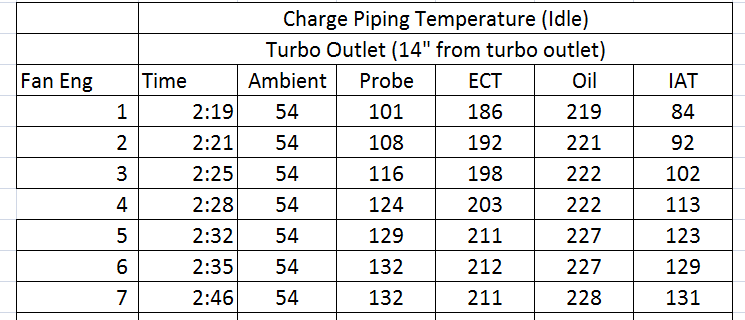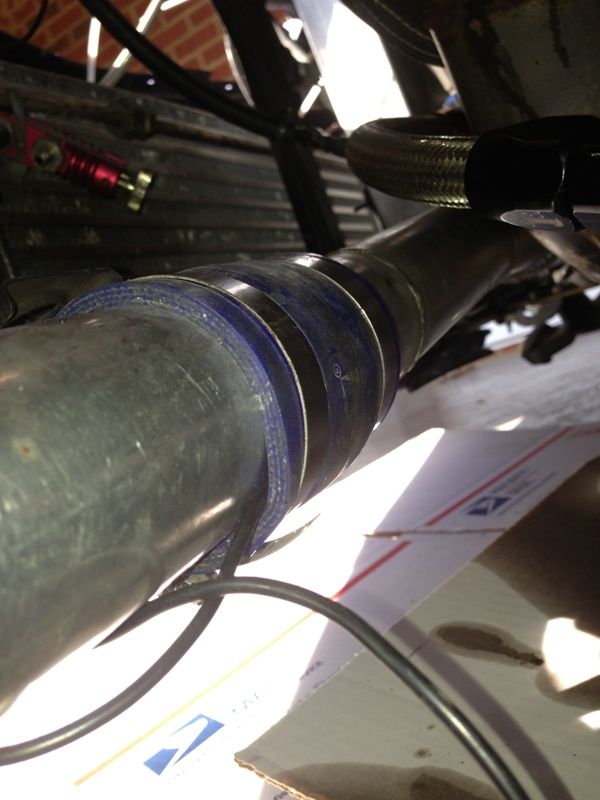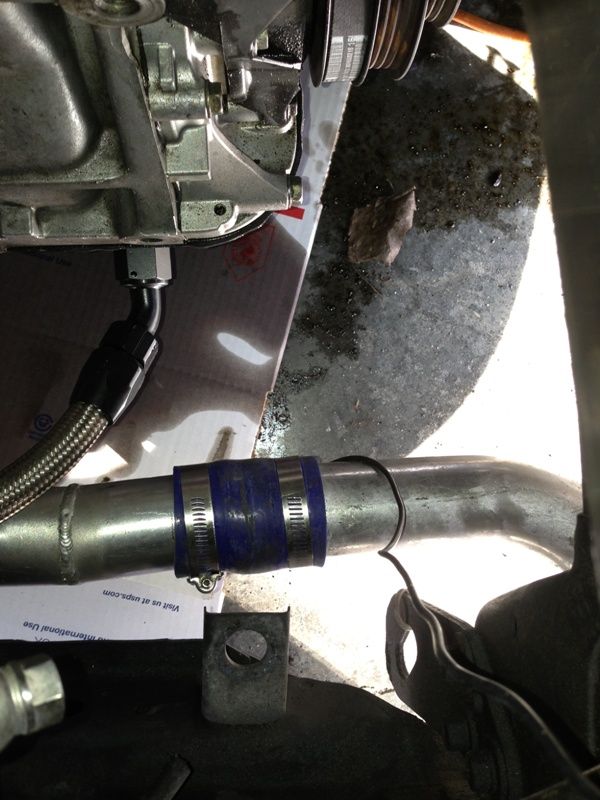Next up was the charge piping temperature testing. The entire probe was inserted into the charge piping approximately 14" away from the turbo. As stated earlier I was unable to get the probe any closer, as I was unable to reach it at the time. Even though this was the case the probe was closer to the turbo than it was to the intercooler.
The purpose of this test was to determine if the temperatures inside of the charge piping were higher or lower then the under hood temps. As stated before if the charge piping temps were lower then the under hood temps reflective heat tape would be applied and more readings taken to look for improvements in IAT's.
The results were a little interesting. A total of 7 test were conducted during idle. Temperature changes were noted every time the radiator fan would kick on just like previous tests. An average temperature of 120 degrees was noted with the probe 14" away from the turbo at idle.
After plugging all of the numbers into excel I noticed that at first the probe temps were higher then my IAT's. The probe temps and IAT's eventually leveled out to around the same temperature though. This test tells me that the heat that is generated from the turbo (@ idle) has a large influence on charge piping temperatures even though the turbo is not spinning very much.
My highest temperature recorded after the turbo blanket was installed @ idle was 121 degrees, thats one degree hotter then the temperatures inside the charge piping. Being that my charge piping is made of aluminum I would have reason to believe that radiant heat from the engine bay is playing a role in the high charge piping temps @ idle.
Right now this may seem like a no brainer to wrap the charge piping with the reflective heat tape to combat the radiating heat in the engine bay, but just wait until you see the numbers at a 60 mph roll and WOT.










 Reply With Quote
Reply With Quote